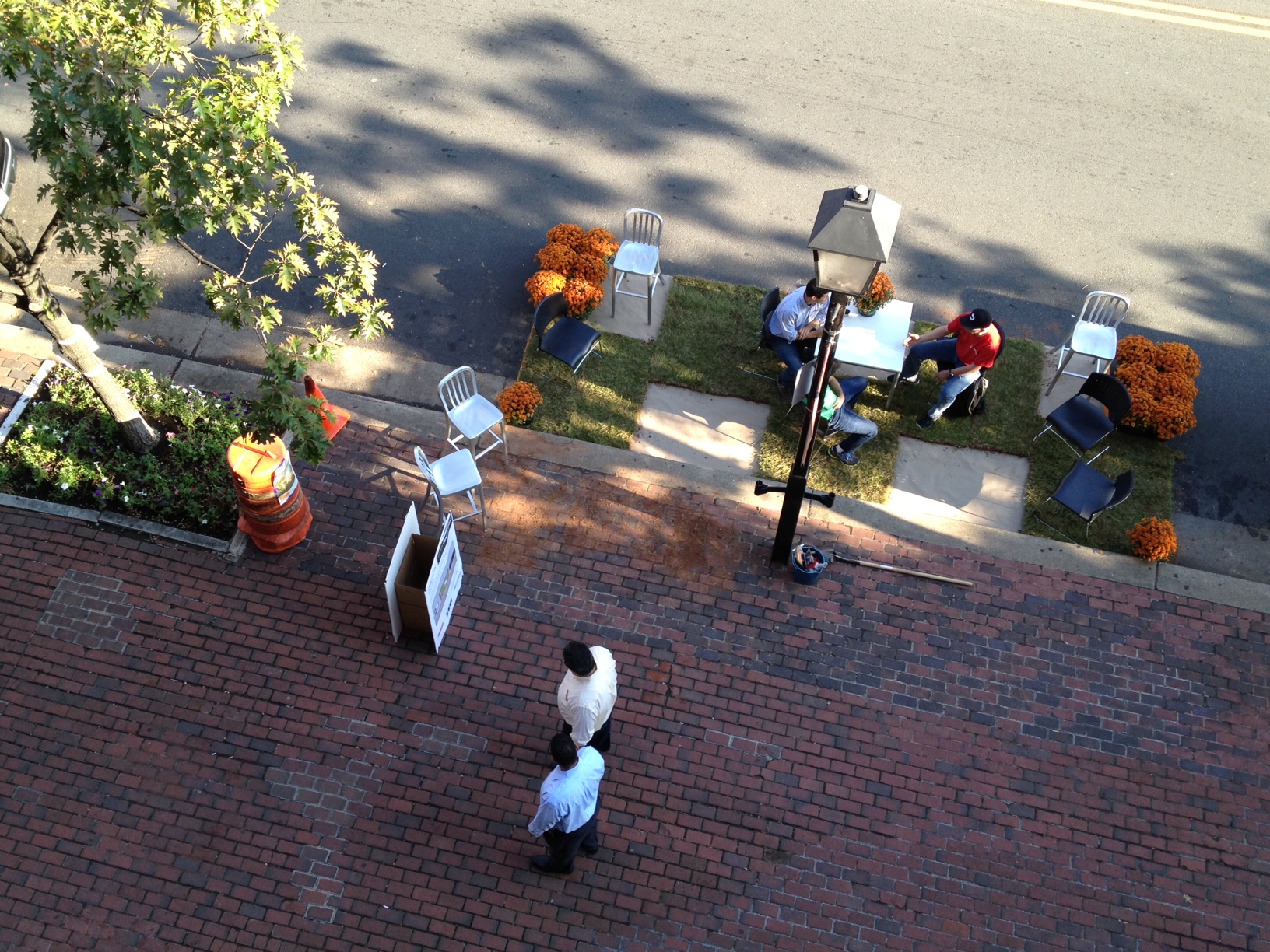On the new Plan.Place blog, the author describes the ways that small-scale, temporary projects can have a widespread, lasting impact on the way that our communities evolve and change.
In a post from the Plan.Place blog, the author explores the need to better allocate street space while acknowledging the difficulties that come with making visible, functional changes to a community. While the author commiserates with those who have "a hard time weighing the benefits of improving pedestrian and bicycle infrastructure against a potential increase in commute times or the threat of having an even harder time finding a parking spot," she argues the importance of evolving our streets along with the rest of the urban form. "The easiest, most effective way for people to understand the potential for a place (be it the road in front of their house or the empty lot down the street) to look and function differently is through actually showing them, using temporary installations rather than solely relying on renderings or precedents."
From PARK(ing) Day to pop-up bike lanes to Better Blocks projects, it is clear that there is value in testing concepts with the community, whether or not you have a long-term goal of a permanent project. The author includes several examples of projects big and small, and suggests experimenting with the urban form, on many scales. "If you’re considering improvements that could be easily demonstrated via a temporary project – curb extensions, bike lanes, valet parking, food trucks, more street trees, etc – why not take a chance and try it out before you and your community commit to a solution?"
"It doesn’t have to be expensive, or time-consuming. In the words of Janette Sadik-Khan, Commissioner of the New York City Department of Transportation from 2007-2013, 'if you’ve got a big, controversial project, think about lawn chairs.'"
FULL STORY: Please, Play in the Street: Urban Design for the Commitment-Phobe in All of Us

Alabama: Trump Terminates Settlements for Black Communities Harmed By Raw Sewage
Trump deemed the landmark civil rights agreement “illegal DEI and environmental justice policy.”

Planetizen Federal Action Tracker
A weekly monitor of how Trump’s orders and actions are impacting planners and planning in America.

The 120 Year Old Tiny Home Villages That Sheltered San Francisco’s Earthquake Refugees
More than a century ago, San Francisco mobilized to house thousands of residents displaced by the 1906 earthquake. Could their strategy offer a model for the present?

Opinion: California’s SB 79 Would Improve Housing Affordability and Transit Access
A proposed bill would legalize transit-oriented development statewide.

Record Temperatures Prompt Push for Environmental Justice Bills
Nevada legislators are proposing laws that would mandate heat mitigation measures to protect residents from the impacts of extreme heat.

Downtown Pittsburgh Set to Gain 1,300 New Housing Units
Pittsburgh’s office buildings, many of which date back to the early 20th century, are prime candidates for conversion to housing.
Urban Design for Planners 1: Software Tools
This six-course series explores essential urban design concepts using open source software and equips planners with the tools they need to participate fully in the urban design process.
Planning for Universal Design
Learn the tools for implementing Universal Design in planning regulations.
Clanton & Associates, Inc.
Jessamine County Fiscal Court
Institute for Housing and Urban Development Studies (IHS)
City of Grandview
Harvard GSD Executive Education
Toledo-Lucas County Plan Commissions
Salt Lake City
NYU Wagner Graduate School of Public Service



























